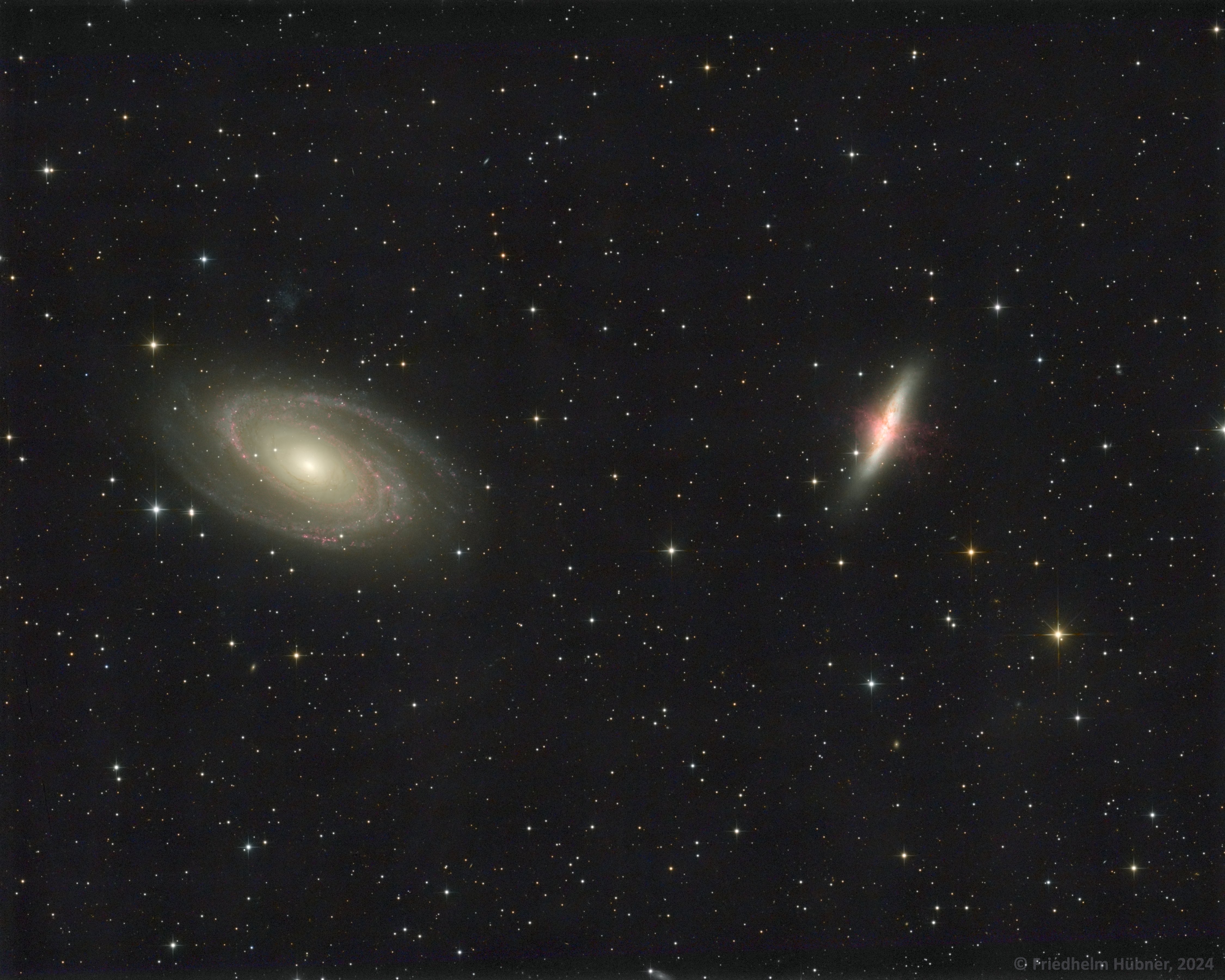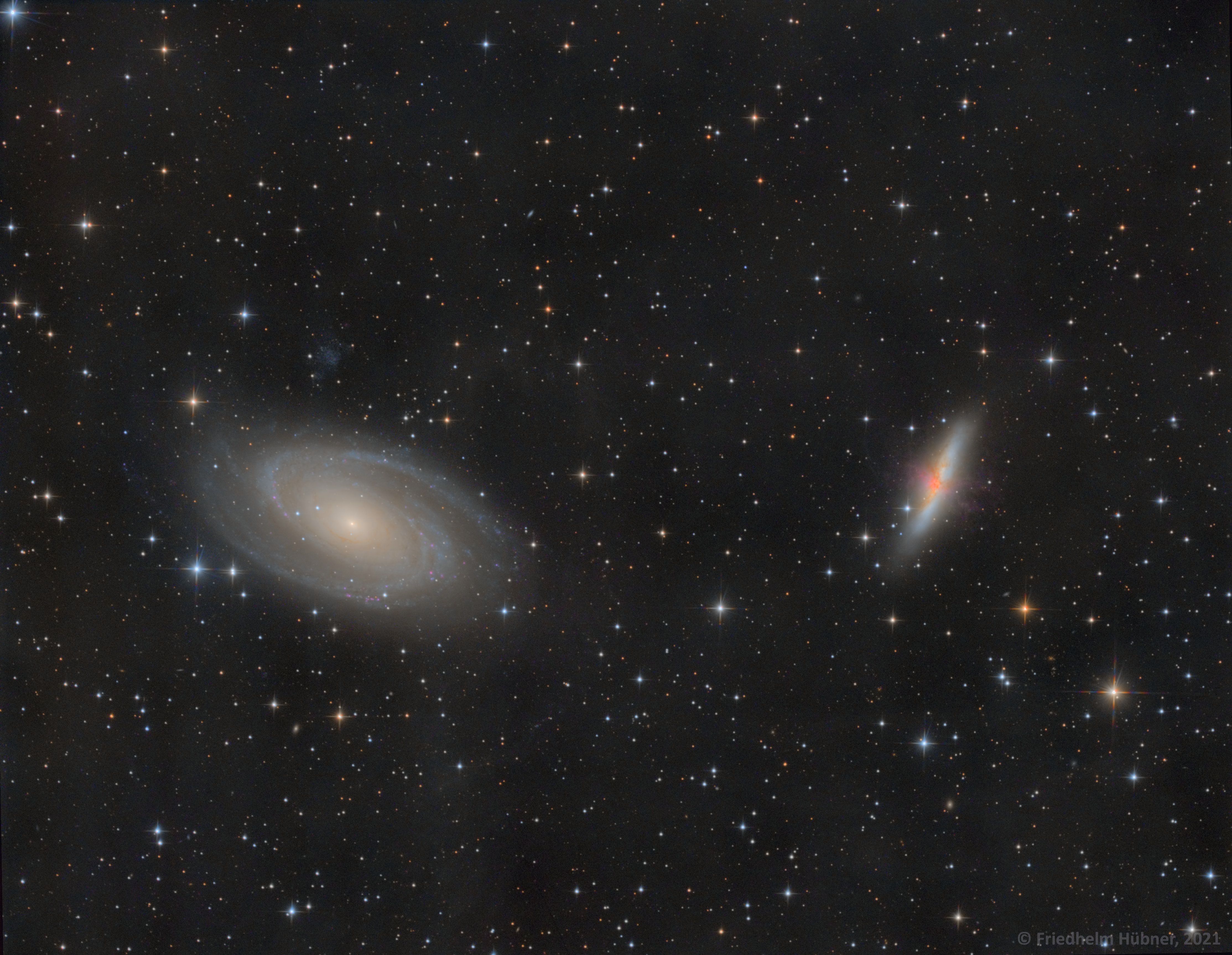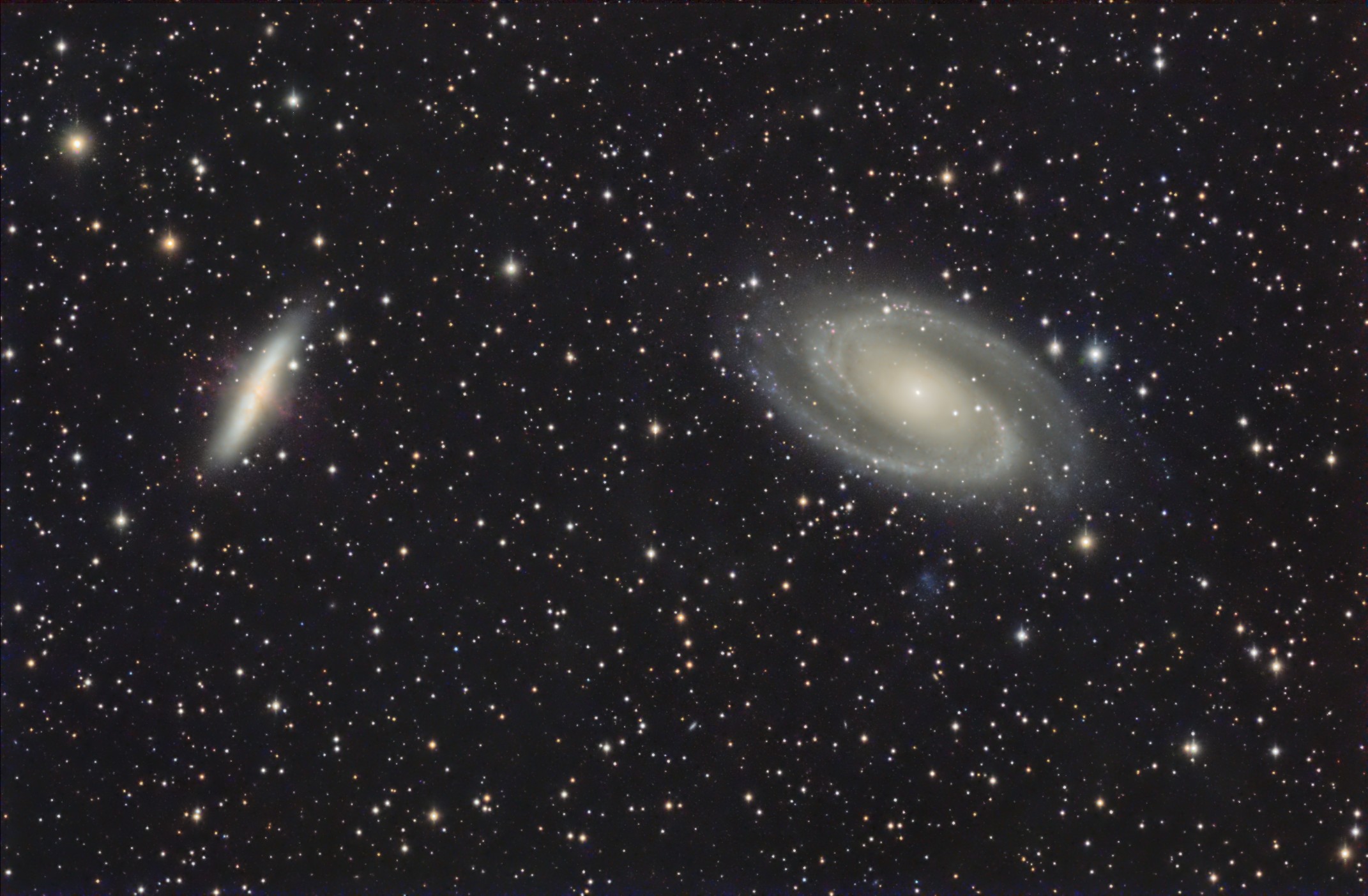|
M81 and M82 (UMa)

Click on the image for a larger version
| Date/Site: |
21., 22. and 25. April, 22. and 25. Mai, 3., 5. and 6. Juni 2024. Remote observatory on the AAR club's site in Presberg |
Exposure/
Filter: |
RGB: 154 x 300 seconds (-10°C),
L: 23 x 300 seconds
Hα: 54 x 600 seconds (-20°C) |
Camera/
Optics/
Instrument: |
Touptek 294CP on 150mm f/5 Newton with 2" Skywatcher Comacorrector,
Moravian G3-16200 with Astronomik Type II-filter on 250mm f/4,7 Newton with VIP-3010 Paracorr on 10Micron GM1000 HPS |
|
Data acquired remotely using N.I.N.A.,
Guiding: ASI120 attached to a 61mm-finder,
Focusing with Microtouch,
Calibration with MaximDL 6, processing in PixInsight 1.8,
Hα-Kontinuum-Subtraktion, Hα-Integration with Affinity Photo |
After many unsatisfactory attempts to image and to process the data to achieve a presentable image of these two galaxies almost 24 hours of exposure time was needed to produce this result.
But the Hα-filaments of M82 could still have been a bit more prominent.
M81/82 (UMa), 2021

Click on the image for a larger version
| Date/Site: |
23. March, 1., 3. and 4. April 2021. Remote observatory on the AAR club's site in Presberg |
Exposure/
Filter: |
R: 18 x 300 seconds,
G: 19 x 300 seconds,
B: 17 x 300 seconds,
L: 74 x 300 seconds (-20°C) |
| Camera: |
Moravian G3-16200 with Astronomik Type II-filters |
Optics/
Instrument: |
250mm f/4,7 Newton with VIP-3010 Paracorr on 10Micron GM1000 HPS |
|
Guiding: Lodestar attached to a 61mm-finder,
focusing: Microtouch and FocusMax,
data acquired remotely using CCD-Commander and MaximDL 6,
processing: MaximDL 6 and PixInsight 1.8 |
Deep images of the surroundings of M81 and M82 show a lot of Integrated Flux Nebula (IFN).
Apart from this signal the stacked data unfortunately showed a lot of strange spots and gradients. There was no reliable way to discern signal from bias, especially in this region of the sky. This presentation therefore restrains a bit concerning the background.
M81/82 (UMa)

Click on the image for a larger version
| Date/Site: |
May 5. and 6., 2016, ITV, Gedern |
Exposure/
Filter: |
Lum 6 x 5 minutes,
red 6 x 5 minutes,
green 6 x 5 minutes,
blue 6 x 5 minutes (-20°C) |
| Camera: |
QSI 632 with SBIG- and Baader-filters |
Optics/
Instrument: |
4"-TMB refractor of the AAR on 10Micron GM1000 HPS |
|
Guiding: Lodestar attached to a 61mm-finder,
focusing with USB_Focus and FocusMax,
automatic image acquisition with CCD-Commander and MaximDL 6,
calibration: MaximDL 6, processing: PixInsight 1.8 |
For the first time ever I went to a star party with the full imaging gear and not only with the intention to observe visually. Silently I had my doubts if it would be wise to set up the fragile equipment at a busy site like the International Telescope Meeting Vogelsberg. But I wanted to test the TMB-refractor with its new focus-motor in order to be ready for the planned trip to La Palma.
Already on the site was Thomas, head of the Rhine-Main-Taunus-astro-aficionados, later to be joined by my old buddy Ben from Munich and by Tobbe from Lausanne, who brought his 20“ flexrocker-Dobson. On their websites Ben and
.de/itv2016.html" target="_new">Thomas posted very colourful narratives catching the wonderful spirit of the four days we stayed there.
I had imaged the Bode galaxies from my terrace with the same equipment only two nights before and I wondered how much a difference the decent rural sky of the Vogelsberg would make compared to the sky of a small town on the river Rhine. The difference is enormous. For this image I used only the frames captured at the ITV.
|


